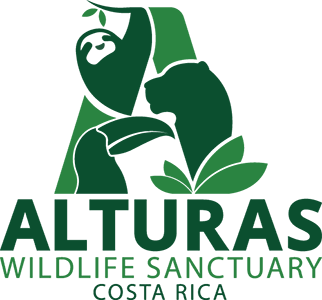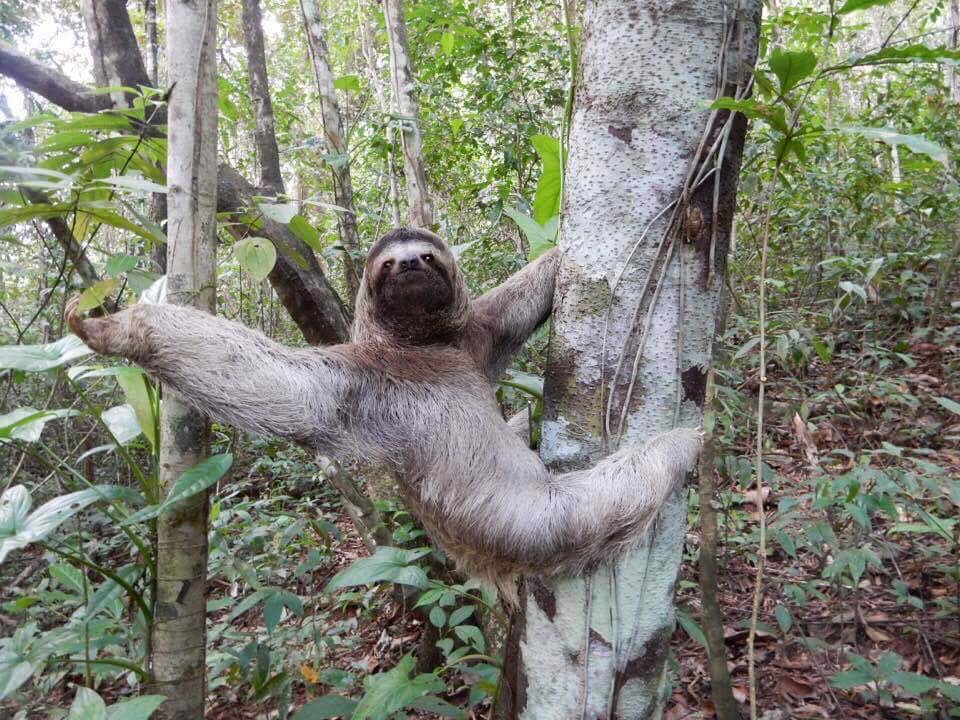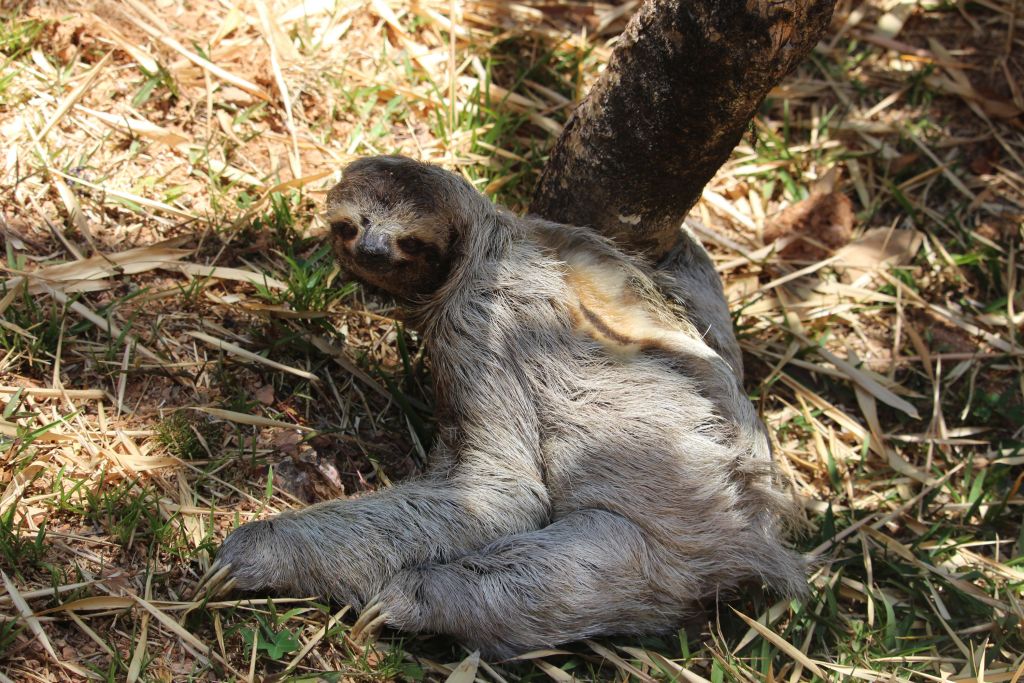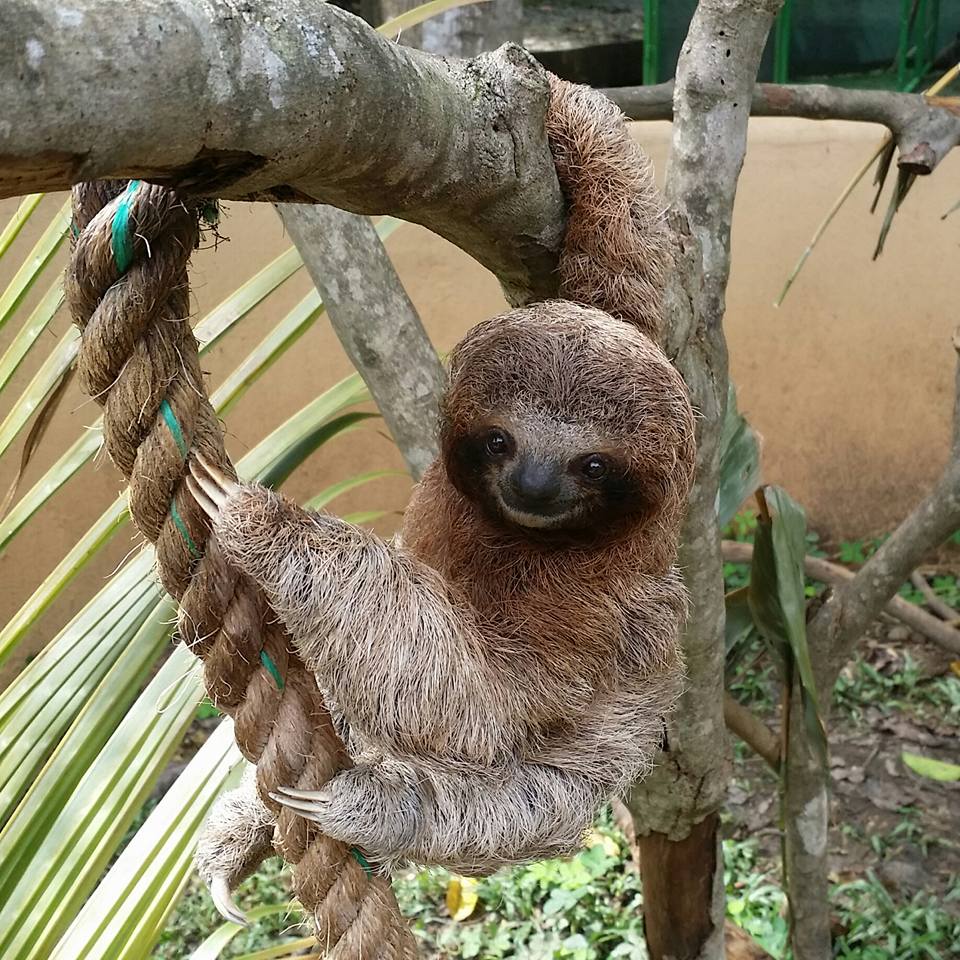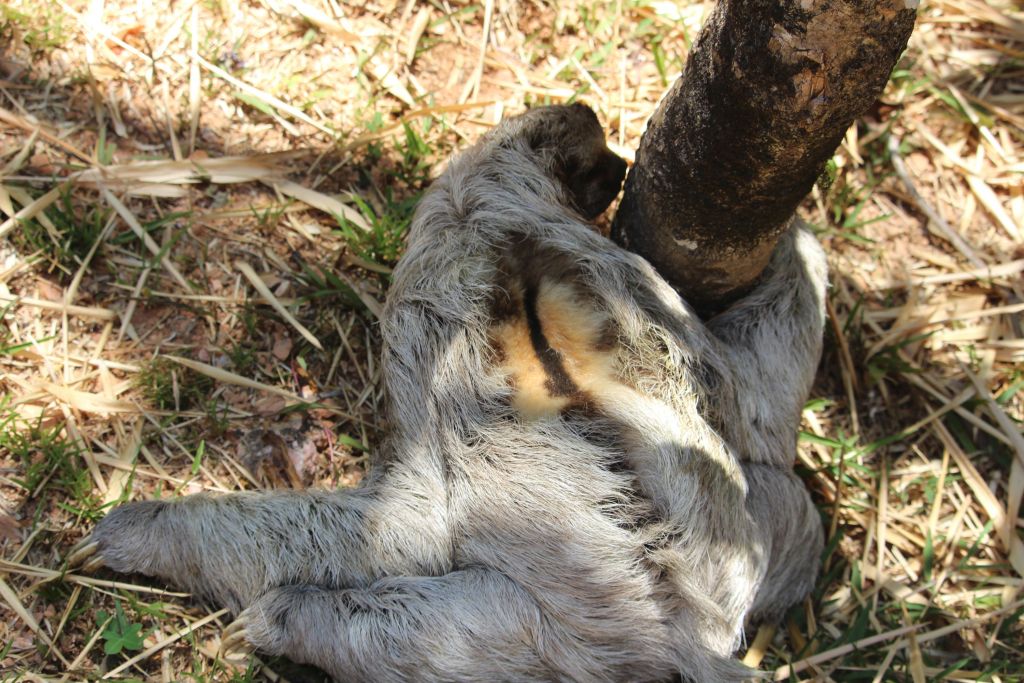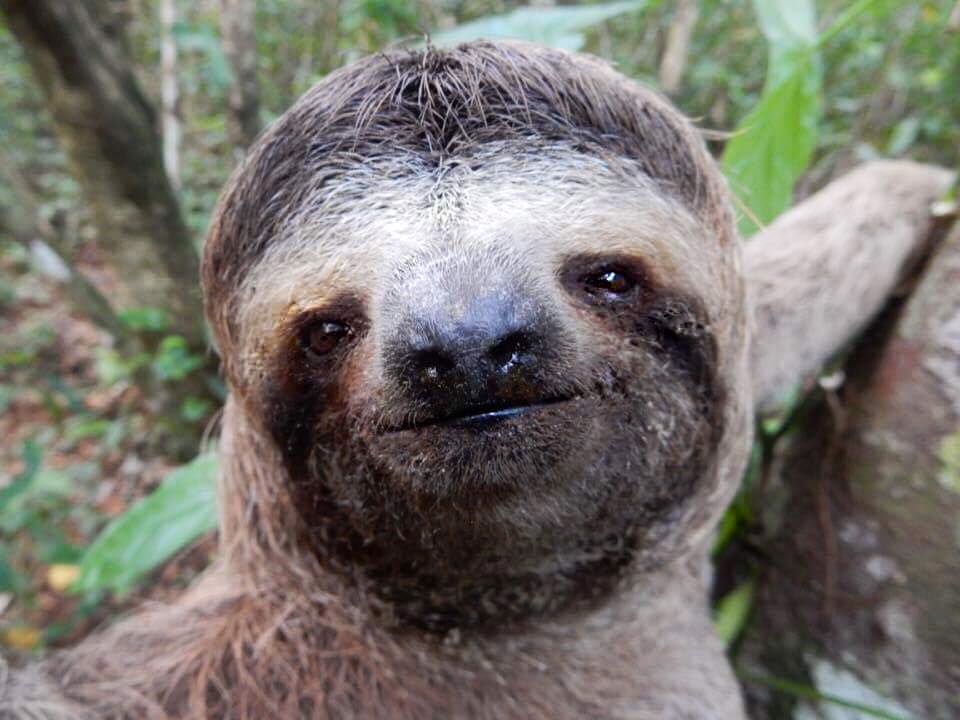Three-toed Sloth
Taxonomy: Bradypodidae (Bradypus variegatus)
Spanish Name: Perezoso de tres dedos
Conservation Status: Least concern according to IUCN Red List
Lifespan: As popular as sloths are, there is little research confirming or denying different theories, particularly with this species. An estimated lifespan in the wild is 30-40 years but they are not often found in captive settings. From our experience at Alturas, we find they get very stressed very easily and would therefore not do well long term.
Distribution: From Central Honduras through Central America and most of northern South America.
Habitat: Tropical forests, dry forests, riparian forests and secondary forests. Found higher in trees, often within the canopy.
Behavior: From Central Honduras through Central America and most of northern South America.
Weight: 2.5-5.5 kilograms
Diet: Herbivorous; they feed on mostly leaves, buds, and flowers. Less diverse than two toed sloths in Costa Rica. They may choose to eat from only a few favorite trees they eat from. The diet of a three toed sloth is somewhat inherited from its mother based on what her preference was while raising the offspring.
Reproduction: Gestation is only 6 months long for three toed sloths and females will produce one young potentially every year after maturity. The young will stay with the mother for about six months when the mother leaves and gives her territory to the offspring.
Threats: Deforestation is a concern for their environment. Major predators includes harpy eagles, and large cat species such as pumas and jaguars.
At Alturas: We do not have any three toed sloths as permanent residents at Alturas Wildlife Sanctuary
